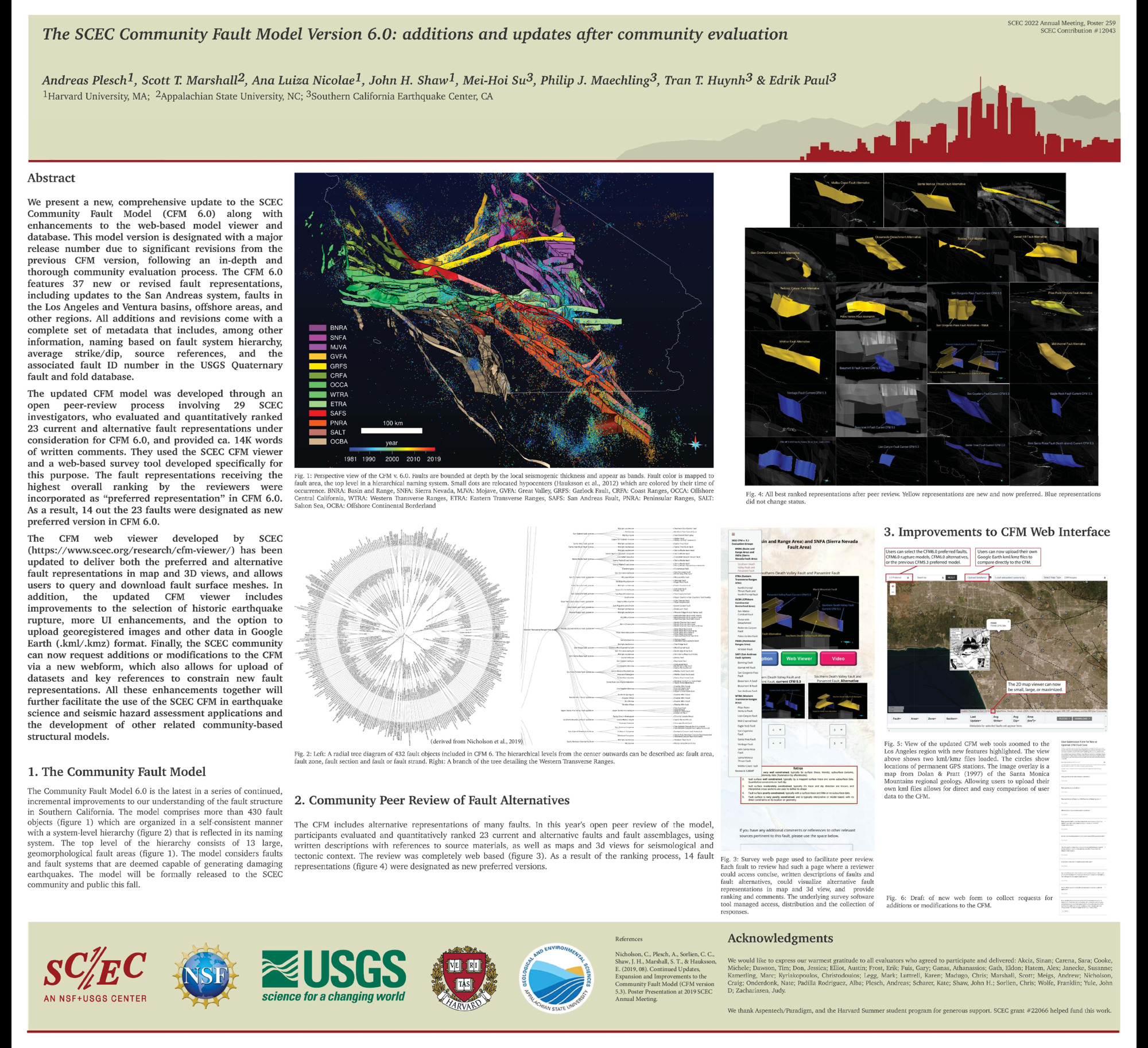Group A, Poster #259, SCEC Community Models (CXM)
The SCEC Community Fault Model Version 6.0: additions and updates after community evaluation
Poster Image:

Poster Presentation
2022 SCEC Annual Meeting, Poster #259, SCEC Contribution #12043 VIEW PDF
We present a new, comprehensive update to the SCEC Community Fault Model (CFM 6.0) along with enhancements to the web-based model viewer and database. This model version is designated with a major release number due to significant revisions from the previous CFM version, following an in-depth and thorough community evaluation process. The CFM 6.0 features 37 new or revised fault representations, including updates to the San Andreas system, faults in the Los Angeles and Ventura basins, offshore areas, and other regions. All additions and revisions come with a complete set of metadata that includes, among other information, naming based on fault system hierarchy, average strike/dip, source references, and the associated fault ID number in the USGS Quaternary fault and fold database. The updated CFM model was developed through an open peer-review process involving 29 SCEC investigators, who evaluated and quantitatively ranked 23 current and alternative fault representations under consideration for CFM 6.0, and provided ca. 14K words of written comments. They used the SCEC CFM viewer and a web-based survey tool developed specifically for this purpose. The fault representations receiving the highest overall ranking by the reviewers were incorporated as “preferred representation” in CFM 6.0. As a result, 14 out the 23 faults were designated as new preferred version in CFM 6.0. The CFM web viewer developed by SCEC (https://www.scec.org/research/cfm-viewer/) has been updated to deliver both the preferred and alternative fault representations in map and 3D views, and allows users to query and download fault surface meshes. In addition, the updated CFM viewer includes improvements to the selection of historic earthquake rupture, more UI enhancements, and the option to upload georegistered images and other data in Google Earth (.kml/.kmz) format. Finally, the SCEC community can now request additions or modifications to the CFM via a new webform, which also allows for upload of datasets and key references to constrain new fault representations. All these enhancements together will further facilitate the use of the SCEC CFM in earthquake science and seismic hazard assessment applications and the development of other related community-based structural models.


























